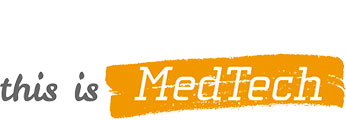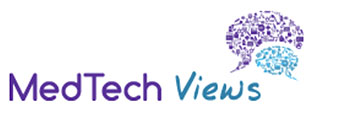Trilogue on the Medical Devices and In Vitro Diagnostics regulations must focus on clarity, applicability and feasibility in order to strengthen patient safety
Posted on 20.11.2015

Brussels, 6 October 2015 – Ahead of the upcoming trilogue, MedTech Europe, the alliance of Eucomed and EDMA, is calling on policy makers to ensure that every proposed measure consistently meets the two overarching objectives of the regulations, namely to increase patient safety and to stimulate innovation in medical technology in Europe.
The two regulations on medical devices and in vitro diagnostics include measures which will have tremendous impact on patients, the industry and Europe at large. Serge Bernasconi, CEO of MedTech Europe says “We need this regulation, but policy makers must ask themselves: does each new measure see a real increase in patient safety, help rather than hinder needed innovation for patients and avoid unnecessary complexity for SMEs and regulators?”
For the medical devices sector, Eucomed has stressed the need to ensure that the EU provides improved levels of patient safety across Europe by addressing five areas of concern:
- The newly added scrutiny mechanism is still, in industry’s view, redundant in light of other improved measures. Despite our recommendations, if this mechanism is added it must be made workable and predictable.
- The case-by-case approach of clinical evaluation should be improved by getting the definitions of clinicaldata and clinical equivalence scientifically sound.
- A single rather than multiple high harmonised level of safety must be ensured for re-use of Single Use medical devices with hospitals and subcontractors appropriately covered.
- Ensure hazardous substances, when used in a device providing an overall positive risk ratio, are controlled and labelled by actual risk of exposure and not just ‘hazard’.
- Unnecessary complexity and disproportionate measures must be eliminated by stripping out unfeasible, disproportionate or duplicative requirements, especially in fitting well-established technologies into the current system and by reversing unjustified re-classifications.
For the IVD sector, EDMA wants to ensure careful consideration of the specific nature and technical aspects of IVDs, in particular across the following six critical areas:
- The clinical evidence requirements added by the council must be adapted to the specific nature of IVDs in order to avoid additional and unnecessary burden to the industry.
- The conformity assessment routes must reflect the risk-based approach system to prevent creating disproportionately heavy regulatory problems.
- The quality management system must take into consideration the specific requirements of IVDs and only include requirements applicable to these technologies.
- Companion diagnostics is a growing sector of the IVD sector with high opportunities for innovation. The definition of companion diagnostics should focus on the relevant subset of products that enable personalised healthcare solutions. Mechanisms for clinical evidence requirements such as scientific validity and intermediate assessment must also be thoroughly re-considered in the current council position.
- The new classification system must adhere with the international standards set by the GHTF (Global Harmonization Task Force). The deviation in the current council position increases production burden, reduces industry competitiveness and availability of products in certain markets.
- Labelling requirements should focus on information the users need to know. Information not relevant for safe operation and identification detracts from the effectiveness of labelling and adds unnecessary costs.
The two position papers are available on the MedTechEurope website:
- Eucomed Position ahead of the trilogue on the Medical Devices Regulation
- Comments on Council Approach on proposed regulation on In Vitro Diagnostic Medical Devices
ABOUT MEDTECH EUROPE
MedTech Europe is an alliance of European medical technology industry associations. The Alliance was founded by EDMA, representing the European in vitro diagnostic industry, and Eucomed, representing the European medical devices industry. Other European medical technology associations are welcome to join the Alliance, established to represent the common policy interests of its members more effectively and efficiently.
Our mission is to make value-based, innovative medical technology available to more people, while supporting the transformation of healthcare systems onto a sustainable path. We promote a balanced policy environment that enables the medical technology industry to meet the growing healthcare needs and expectations of its stakeholders. In addition, we demonstrate the value of medical technology by encouraging our members to execute the industry’s 5-year strategy. For more information, visit www.medtecheurope.org.


